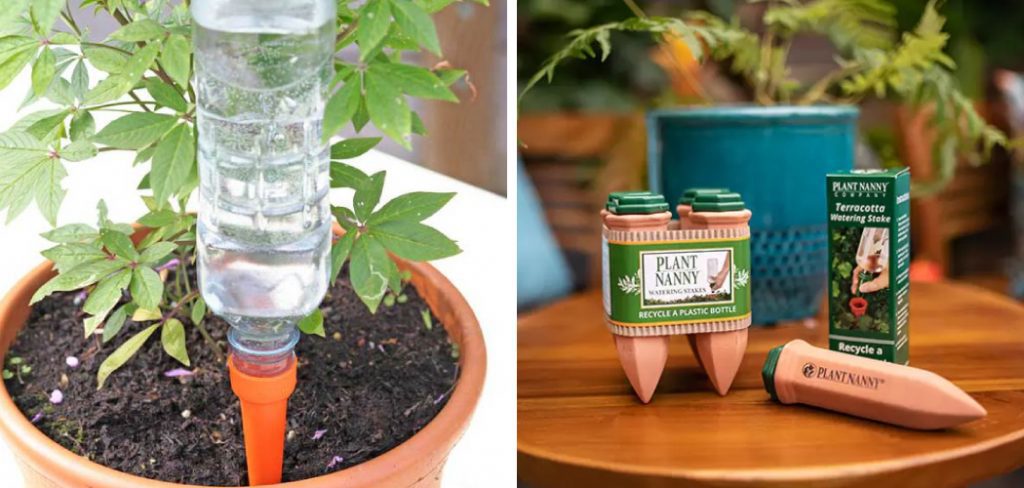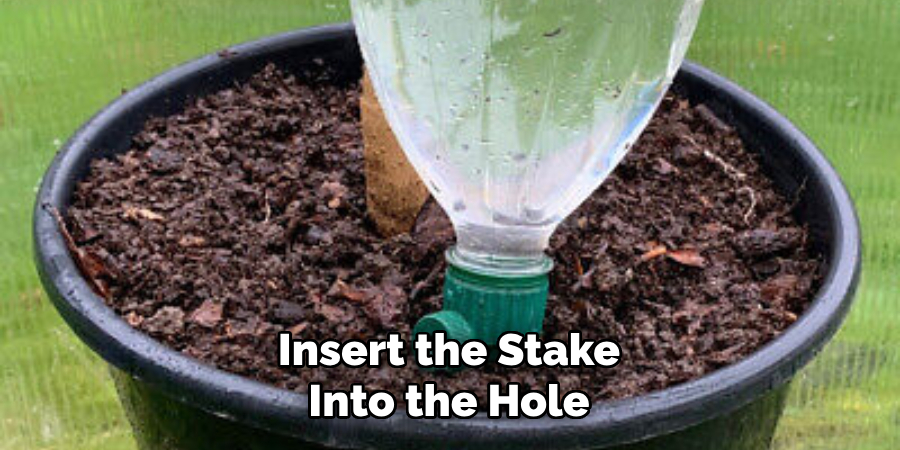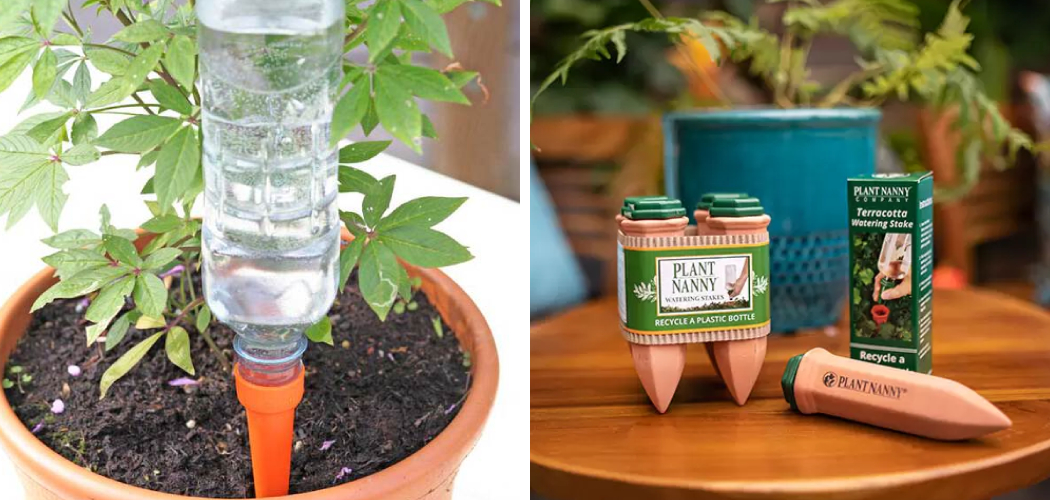Watering stakes are used by inserting them into the soil near the root of a plant, creating a direct water supply. They help in efficient watering by preventing water waste due to evaporation and runoff.
Additionally, they promote the deep and thorough watering of plants, resulting in healthier root systems and overall plant growth. With a simple installation process, watering stakes make it convenient for gardeners to maintain optimal moisture levels for their plants, ensuring their lushness and longevity.
These stakes are available in various sizes and materials, catering to different plant types and soil conditions. By utilizing watering stakes, gardeners can effectively conserve water and provide plants with the necessary hydration for sustained growth and vitality.

How to Use Watering Stakes: Step by Step Guide
Understanding Watering Stakes
Watering stakes are a useful tool for keeping your plants hydrated without constant monitoring. These stakes work by slowly releasing water directly into the soil, delivering it to the roots where it’s most needed. By using watering stakes, you can ensure that your plants receive consistent moisture, reducing the risk of over or underwatering.
There are different types of watering stakes available in the market, including spike, terracotta, and glass stakes. Each type has its own benefits and features, allowing you to choose the one that suits your needs best. Spike stakes are easy to install and adjust, while terracotta stakes are porous and provide gradual hydration.
Glass stakes, on the other hand, are transparent and allow you to see the water level. Using watering stakes not only helps in maintaining healthy plants but also saves you time and effort in watering them regularly.
Setting Up Watering Stakes
Setting up watering stakes for your plants is crucial for their health and growth. To begin, choose the right watering stake that suits your plants’ needs. Consider factors like size and material. Once you have the stake, prepare your plants by watering them thoroughly.
This ensures that the stakes work effectively. Next, install the watering stakes in your garden. Dig a small hole near the plants and insert the stake securely. Make sure it is positioned close enough to the roots for maximum water absorption.
Firmly pack the soil around the stake to prevent it from tilting or becoming loose. By following these guidelines, you can ensure proper usage of watering stakes to keep your plants hydrated and thriving.
Proper Usage And Maintenance Of Watering Stakes
Watering stakes can be used effectively by following a few key tips. Start by understanding the frequency and duration of watering needed with stakes. To maximize their effectiveness, ensure that the stakes are inserted properly and the water flow is regulated correctly.
It is important to clean and maintain the stakes regularly to avoid clogging and to ensure their long-lasting use. Regularly check the water level and refill as needed. Remember to use watering stakes in conjunction with other watering methods for complete irrigation coverage.
By following these guidelines, you can ensure that your plants receive the right amount of water, leading to healthier and thriving greenery.
Frequently Asked Questions On How To Use Watering Stakes
How Do Watering Stakes Work?
Watering stakes are devices that slowly release water into the soil, directly at the roots of your plants. They are inserted into the ground near the plant and filled with water. The stakes have small holes that allow water to gradually seep out, ensuring your plants receive a consistent water supply.
What Are The Benefits Of Using Watering Stakes?
Using watering stakes can help ensure your plants receive the right amount of water, without wastage or risk of over-watering. They promote healthy root growth by delivering water directly to the root zone. Additionally, watering stakes save time and effort by reducing the frequency of manual watering.
How Often Should I Use Watering Stakes?
The frequency of watering with stakes depends on various factors like plant type, soil moisture, and climate. As a general rule, check the soil moisture level before watering and adjust accordingly. In hot weather, frequent watering may be necessary, while in cooler weather, you may need to water less often.
Regularly monitor your plants’ moisture needs to determine the most suitable watering schedule.
Can I Use Watering Stakes For All Types Of Plants?
Watering stakes can be used for a wide range of plants, including vegetables, flowers, and even potted plants. However, it’s important to consider the specific needs of your plants. Some plants might require more or less water, so adjust the watering schedule accordingly.
Consult plant-specific resources or consult a gardening expert for personalized advice.
How Do I Properly Install Watering Stakes?
To install watering stakes, follow these steps:
1. Dig a small hole in the soil near the plant. 2. Insert the stake into the hole, ensuring it remains upright. 3. Fill the stake with water using a watering can or hose. 4. Monitor the water level and refill as needed. 5. Adjust the number of stakes and their placement based on the size and watering requirements of your plants.

Can I Leave Watering Stakes Unattended For A Long Period?
While watering stakes can provide a slow-release water supply, it’s best not to leave them unattended for extended periods. Regular monitoring is recommended to ensure plants receive adequate water and to prevent the stakes from becoming clogged or overwhelmed with excess water.
Adjust the watering schedule as needed to avoid under or over-watering.
Conclusion
To sum up, watering stakes are a simple yet effective solution for keeping your plants hydrated. With their slow and steady release of water directly to the root zone, these stakes take the guesswork out of watering and help ensure consistent moisture.
By following the steps mentioned earlier, you can easily install and use watering stakes in your garden or containers. Remember to choose the right type of stake for your plant’s needs and adjust the watering schedule accordingly. By using watering stakes, you will not only save time and effort but also promote healthier and more productive plants.
So, give them a try and watch your garden thrive with the help of these handy tools. Happy gardening!

